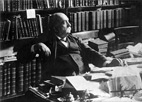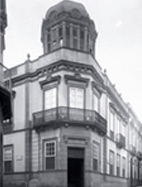History of The Canary Museum
As a result of the initiative of a group of intellectuals led by Dr. Gregorio Chil y Naranjo, the Canary Museum emerged in 1879 as an adcitation for the scientific and cultural development of Las Palmas de Gran Canaria, representing one of the earliest tourist attractions of the city.
The birth of the idea of founding an institution like this was mainly due to two circumstances: on the one hand, the interest that in the middle of the century had aroused the so-called "Canarian antiquities" among the local bourgeoisie, which became fond of collecting vestiges of Aboriginal life and culture in informal expeditions and explorations; and on the other, the development of French anthropological research, since several of the founders of The Canary Museum maintained close scientific relations with some of the pioneers of this discipline, such as Verneau, Broca, Quatrefages, Hamy or Berthelot. This provided the new society with a major scientific sponsorship. In addition to this favourable situation, the discovery of Cro-Magnon's man joined the interest in the past of the island populations, as some physical traits led to the mistaken belief in a close relationship between the ancient canaries and the Europeans of the Paleolithic. Although this perception is now far outweighed, the truth is that it decisively influenced the forge of our institution.
However, prehistory and anthropology were not the only original interests of The Canary Museum. Since its creation it was conceived as a society promoting sciences, letters and the arts in general, giving special prominence to everything related to our archipelago. Thus, since its first installation, inaugurated on May 24, 1880, the first library of society was already being exhibited, in addition to pre-Hispanic vestiges, geological, zoological and artistic collections, and at the same time the first library of society was already being formed, with the generous contributions of the society, which would end up being the most complete documentary collection specialized in Canarian themes.
That first facility was located on the top floor of the Town Hall of Las Palmas de Gran Canaria, which generously ceded some rooms, but the collections grew in such a way that the narrowness began to be noticed soon. The solution came from the initiative of Dr. Chil, who in his will bequeathed his own home for the definitive location of the museum, as well as other real estate, his valuable collections – archaeological and natural sciences – and the 7,500 volumes of his library, thus guaranteeing the future of the entity.
Although Chil died in 1901, his legacy was not received until 1913, the date of his widow's death. However, the transfer of The Canary Museum to which it was home to the illustrious benefactor in the neighborhood of Vegueta, where it was permanently installed, was delayed until 1923, motivated, in part, by the serious economic crisis affecting the Canary Islands after World War I. The reopening of services was delayed until the late 1930s.
It begins then, despite economic hardship and sociopolitical avatars, a culturally fruitful era, marked by the celebration of public events, both scientific and artistic or literary, and by the contribution to the development of knowledge about the history of the islands. The Canary Museum then tries to fill the gap throughout the archipelago of other bodies, public or private, dedicated to scientific-cultural promotion, and becomes a meeting point for all kinds of researchers. This stage is symbolically defined by the incorporation of The Canary Museum to the Higher Council for Scientific Research (CSIC) in 1944.
But the truth is that the financial situation of the entity only worsened in the following decades, and although in the 1950s the city council and the lobby began to provide some funds for its maintenance, the situation could not be resolved until 1973, when the island corporation agreed to take over the economic affairs of society , forming a Board of Trustees made up of representatives of the lobby itself and other entities and bodies related to culture. Then begins a stage in which The Canary Museum enjoys some tax advantages and renews the favor of civil society, a sign of what are the declaration of Historic-Artistic Monument in 1962 and the award of the Gold Medal of Merit in the Fine Arts in 1980.
In 1984, coinciding with the incorporation of the Canary Islands into the new political framework of the Autonomous Communities and with the economic situation of the stabilized society, The Canary Museum modernizes and specializes its museum content, which focuses preferably on the archaeological funds of the pre-Hispanic cultures of Gran Canaria, starting a stage of reforms that involve a reorganization of the exhibition area and a spectacular increase in the number of visitors. In this context, the institution joined the Spanish System of Museums in 1987, received in 1993 the Gold Medal of the City of Las Palmas de Gran Canaria, in 1995 it was declared a Public Utility and in 1996 it received the Canarias Award of Historical Acervo.
In the first decade of the new century, the concern of The Canary Museum has been to serve the three large groups of users of its services: visitors to the permanent exhibition, the specialists in prehistory, who have in our facilities an incomparable collection of remains that help them to better understand the reality of our past; and researchers, students or curious people who make use of a documentary collection that has not ceased to enrich a single day since the foundation and that today achieves an incomparable heritage wealth.
All this requires the search for new means of expansion of the facilities of society, an extension that is already underway in some of the adjoining properties, acquired in recent years by various routes, and which will give rise to new attractions and new services. This perspective opens up a hopeful horizon for the future of The Canary Museum, which, as on previous occasions, will be able to meet the increasingly clear demands of society.



